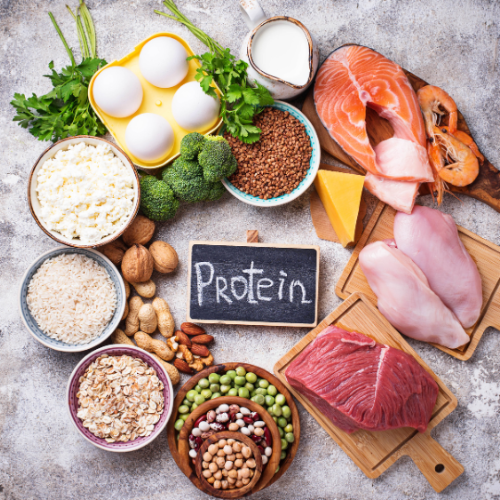
Hormone Optimization in Pain Management
When we talk about pain management, we tend to not think about hormone optimization but we DO think about medications, physical therapy, maybe surgery. Understanding the WHY and HOW hormones affect pain can definitely be a total game changer. And in my clinical practice it has led to a lot of breakthroughs!
Hormones are the body’s internal messengers or little gate keepers, regulating metabolism and growth, mood and immune function. They influence both how we perceive pain, while also having the power to change the intensity of pain we experience. Major hormones include cortisol, estrogen, testosterone, progesterone and thyroid hormones.
Cortisol Hormone Optimization
Known as the stress hormone, it is produced in the adrenal gland. Cortisol helps regulate metabolism, inflammation and the immune system. It has a strong anti-inflammatory effect and the reason why using synthetic hormones works so well for pain and inflammation short term. On the flip side, chronic stress can lead to elevated cortisol levels, which can actually INCREASE inflammation.

Balance is key!
Estrogen and Testosterone Optimization
Estrogen being too low can cause migraines in women, while testosterone being too low can increase men’s sensitivity to pain.
Low estrogen increases inflammation and makes pain conditions like fibromyalgia WORSE! Fibromyalgia is widespread musculoskeletal pain. Ever heard of musculoskeletal syndrome of menopause?…could this be something commonly misdiagnosed as fibromyalgia? suspicious is you ask me.
LOW ESTROGEN causes sleep problems, fatigue, bone loss, memory problems, vaginal dryness and others.
HIGH ESTROGEN causes can ALSO cause significant problems like weight gain, fatigue, depression, mood instability, headaches, sleep problems, bloating, increased risk of blood clots, decreased libido, vaginal atrophy, lack of sex drive…balance is key.
Estrogen replacement and sometimes, balancing estrogen with progesterone with hormone replacement therapy (HRT) could be the key to reducing systemic inflammation and reducing body pain especially in women.
Thyroid Hormone Optimization
These hormones regulate metabolism and energy levels. An underactive thyroid (hypothyroidism) can lead to diffuse body pain and muscle stiffness, often mimicking conditions like fibromyalgia.
Low thyroid function can cause pain through various mechanisms affecting different parts of the body, some known problems include:
1. Joint Pain and Stiffness
2. Muscle Pain and Weakness
3. Peripheral Neuropathy
4. Carpal Tunnel Syndrome
5. Headaches and Migraines
6. Fibromyalgia
7. Inflammation
8. Bone and Joint Health
9. Depression and Mood Changes
Addressing underlying low thyroid with lifestyle changes, diet, exercise and sometimes hormone replacement therapy can normalize or even optimize hormone levels enough to make a significant improvement in the lives of our patients.
Optimizing Hormones for Pain Relief
So, HOW do we do it?
1. Regular Monitoring
Have your doctor draw hormone labs including testosterone, free testosterone, estrogen both E1 and E2, progesterone, cortisol and a full thyroid panel including free T3 and sometimes Reverse T3 to determine whether your body is converting appropriately.

2. Lifestyle Modifications To Balance Hormones
Diet, exercise, and stress management cannot be stressed enough! A balanced diet rich in omega-3 fatty acids (fatty fish/fish oil, chia seeds, hemp seeds) can regulate and reduce inflammation.

Regular exercise will improve muscle strength and flexibility, increasing natural pain killers (endorphins)!

3. Bioidentical Hormone Replacement Therapy (BHRT) for hormone optimization
Sometimes replacing hormones is necessary and can be EXTREMELY lifechanging. This should only ever be done in physiological doses and ONLY in a way to correct deficiencies and improve symptoms.
4. Integrative Approaches
Combining traditional pain management techniques with hormone optimization can provide a more holistic approach to treatment.
The Takeaway
Balancing, better yet, optimizing hormones, is not a one-size-fits-all solution and everyone is different, but it is something we believe should not be overlooked in comprehensive pain management. It is so important to find a provider who will listen to your symptoms and not dismiss you! When we treat pain we look at the whole picture, we consider all the contributing factors and DONT just treat symptoms with pills. Sometimes we address hormone imbalance trying to help with 3 specific symptoms and realize it also improved so many other issues such as insomnia, muscle pain, migraines…It’s incredible!
So often pain conditions are diagnosed as “disorders” and “diseases” disconnected from anything else, and in isolation, they are treated symptomatically. This only helps temporarily and eventually it means more drugs, more therapies, more side effects from those drugs and so on and so on…Lets dig in, lets dive deeper and see the WHY and the HOW together. We would love to help you feel like your BEST SELF again.

God Bless and Happy Healing!
Treasure Valley Pain Center Family
Other great resources:
Web MD The link between menopause and chronic pain
NIH: Hormones and their interaction with the pain experience
Women’s International: Chronic pain and it’s links to hormones

